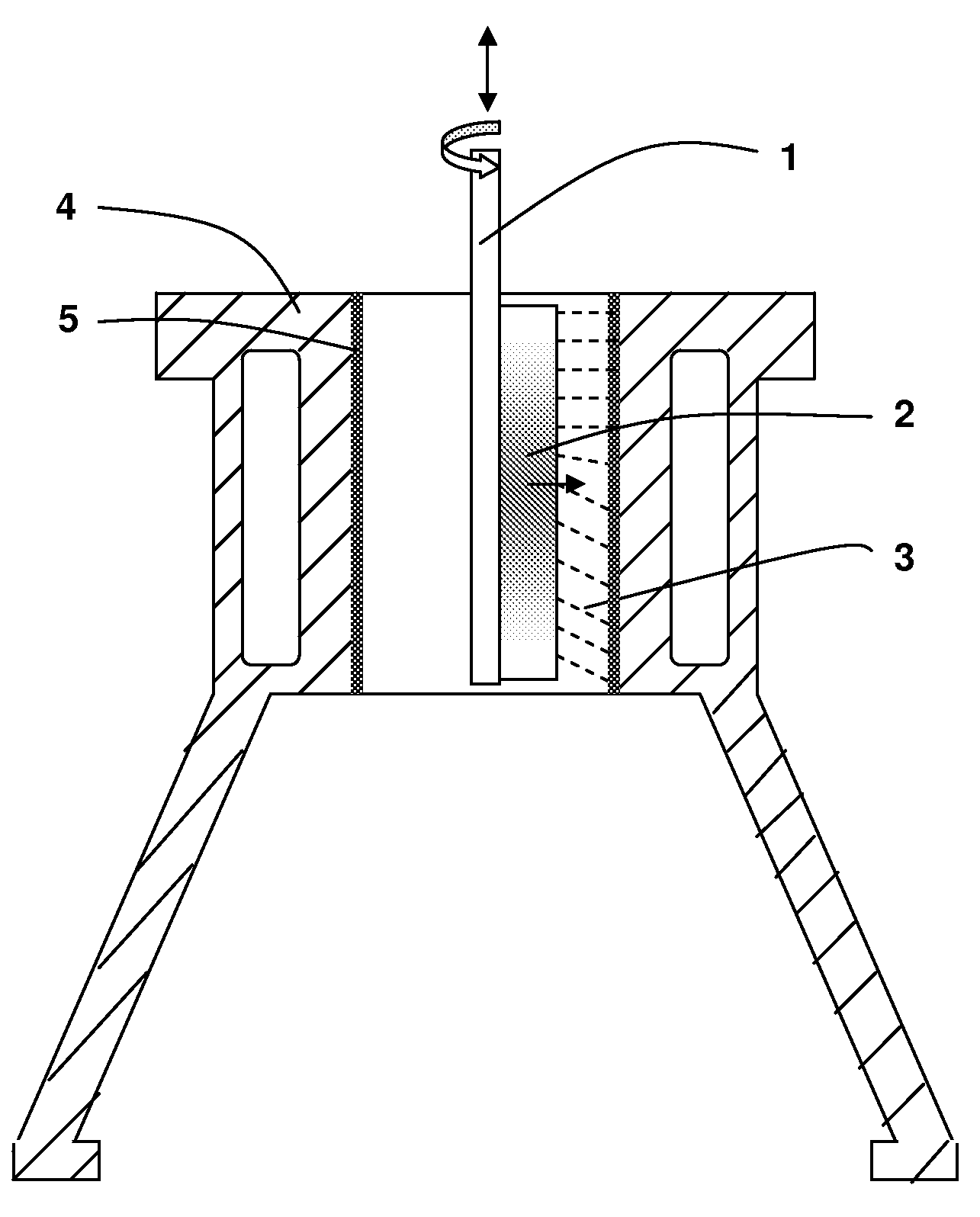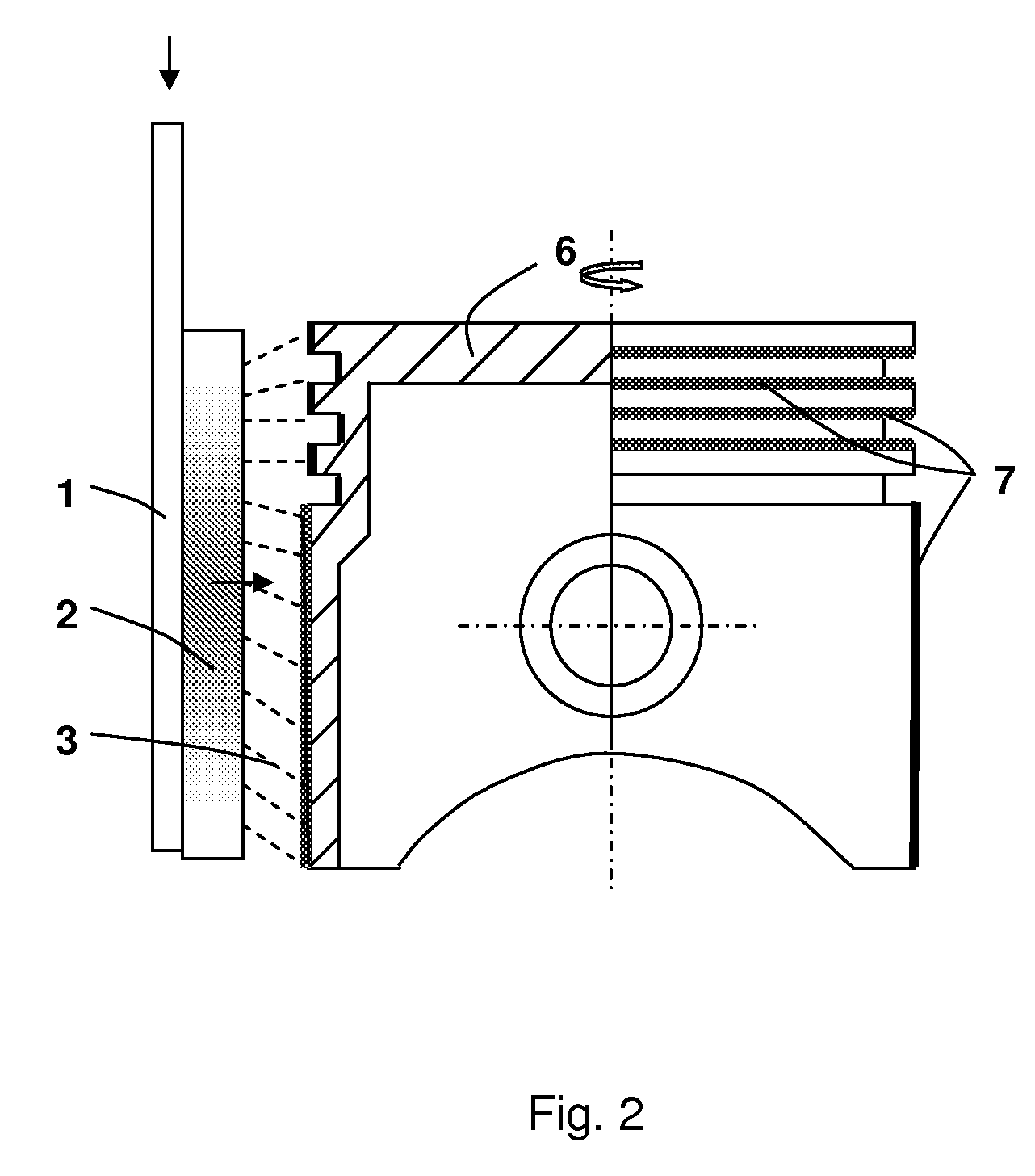Method of forming an oxide coating with dimples on its surface
a technology of oxide coating and dimples, which is applied in the direction of coating, ion implantation coating, metallic material coating process, etc., can solve the problems of reducing the production cost of ethanol, reducing the production cost, and reducing the manufacturing cost. , to achieve the effect of reducing the manufacturing cos
- Summary
- Abstract
- Description
- Claims
- Application Information
AI Technical Summary
Benefits of technology
Problems solved by technology
Method used
Image
Examples
example 1
[0033]As shown in FIG. 1, a rotating hollow shaft 1 with one to four spraying heads 2, which is connected to a high voltage power supply, sprays an electrolytic solution 3 onto an interior surface of an Al—Si cylinder or engine block 4 bore 5. For multiple cylinders or bores, the above spraying head is required for each of cylinders or bores. For a V6 engine which has six cylinder bores, six above systems are usually needed.
[0034]When the process starts, the surface of said Al—Si alloy is electrochemically etched first by the alkaline solution. The etched Al matrix surface then grows with the formation of a thin oxide layer produced by plasma oxidation when the applied voltage increases, making the coated surface smoother than the etched surface. The dielectric plasma discharges on the oxide surface also cause a large number of dimples on its surface that can be favorably utilized as reservoirs of oil lubricants for reduction of friction and shear force during tribological applicati...
example 2
[0036]As shown in FIG. 2, a fixed hollow shaft 1 with one spraying head 2 sprays an electrolytic solution 3 onto the exterior surfaces of an Al—Si piston 6. The oxide coating forms on the exterior surfaces of the piston 7.
[0037]For instance, the as-prepared thin coating, of 0.5 to 5 microns in thickness, on the exterior surface of said a piston can reduce a mild and severe wear problem.
example 3
[0038]The oxide coating on an Al—Si alloy and Mg component eliminates metal-to-metal contact in a tribological system. The coating on engine block bores and pistons made of any of the said alloys can withstand a higher heat impact than its bare alloy bores and pistons. Therefore, the oxide coating would reduce the risk of adhesive or scuffing wear. The coated engine block bores also have a thermal conductivity similar to metallic engine bores, which would improve heat dissipation and reduce engine bore distortions. This kind of oxide coating is applied particularly onto engine bores and pistons made of Al and Mg alloys.
PUM
| Property | Measurement | Unit |
|---|---|---|
| voltage | aaaaa | aaaaa |
| thickness | aaaaa | aaaaa |
| thickness | aaaaa | aaaaa |
Abstract
Description
Claims
Application Information
 Login to View More
Login to View More - R&D
- Intellectual Property
- Life Sciences
- Materials
- Tech Scout
- Unparalleled Data Quality
- Higher Quality Content
- 60% Fewer Hallucinations
Browse by: Latest US Patents, China's latest patents, Technical Efficacy Thesaurus, Application Domain, Technology Topic, Popular Technical Reports.
© 2025 PatSnap. All rights reserved.Legal|Privacy policy|Modern Slavery Act Transparency Statement|Sitemap|About US| Contact US: help@patsnap.com



